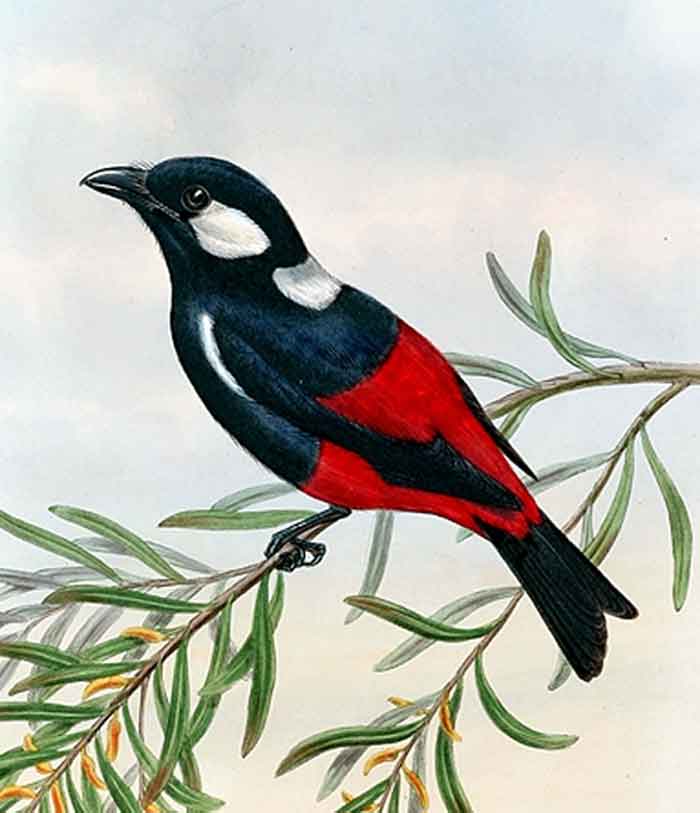Superregnum: Eukaryota
Cladus: Unikonta
Cladus: Opisthokonta
Cladus: Holozoa
Regnum: Animalia
Subregnum: Eumetazoa
Cladus: Bilateria
Cladus: Nephrozoa
Superphylum: Deuterostomia
Phylum: Chordata
Subphylum: Vertebrata
Infraphylum: Gnathostomata
Megaclassis: Osteichthyes
Cladus: Sarcopterygii
Cladus: Rhipidistia
Cladus: Tetrapodomorpha
Cladus: Eotetrapodiformes
Cladus: Elpistostegalia
Superclassis: Tetrapoda
Cladus: Reptiliomorpha
Cladus: Amniota
Classis: Reptilia
Cladus: Eureptilia
Cladus: Romeriida
Subclassis: Diapsida
Cladus: Sauria
Infraclassis: Archosauromorpha
Cladus: Crurotarsi
Divisio: Archosauria
Cladus: Avemetatarsalia
Cladus: Ornithodira
Subtaxon: Dinosauromorpha
Cladus: Dinosauriformes
Cladus: Dracohors
Cladus: Dinosauria
Cladus: Saurischia
Cladus: Eusaurischia
Subordo: Theropoda
Cladus: Neotheropoda
Cladus: Averostra
Cladus: Tetanurae
Cladus: Avetheropoda
Cladus: Coelurosauria
Cladus: Tyrannoraptora
Cladus: Maniraptoromorpha
Cladus: Maniraptoriformes
Cladus: Maniraptora
Cladus: Pennaraptora
Cladus: Paraves
Cladus: Eumaniraptora
Cladus: Avialae
Infraclassis: Aves
Cladus: Avebrevicauda
Cladus: Pygostylia
Cladus: Ornithothoraces
Cladus: Ornithuromorpha
Cladus: Carinatae
Parvclassis: Neornithes
Cohors: Neognathae
Cladus: Neoaves
Cladus: Telluraves
Cladus: Australaves
Ordo: Passeriformes
Subordo: Passeri
Infraordo: Corvida
Superfamilia: Corvoidea
Familia: Artamidae
Genus: Peltops
Species: P. blainvillii – P. montanus
Name
Peltops Wagler, 1829
Typus
Eurylaimus blainvillii Lesson & Garnot, 1827, = Peltops blainvillii
References
Wagler, J.G. 1829. Beyträge und Bemerkungen zu dem ersten Bande seines Systema Avium. Isis von Oken 22(6): 645–664 BHL Reference page. col. 656 BHL

Peltops blainvillii
Peltops is a genus of birds in the family Artamidae. It contains two species that are endemic to the island of New Guinea. The species have also had the common name of shieldbill.
Taxonomy
The genus Peltops was introduced by the German zoologist Johann Georg Wagler in 1829.[2] The type species is the lowland peltops.[3] The name is from the Greek pelte meaning small shield and ops meaning face.[4] The genus was once placed with the monarch flycatchers, but molecular and morphometric studies place it closer to the butcherbirds,[5] possibly as a sister taxon to this group.[6] The genus is placed in its own subfamily, Peltopsinae.[7][8]
The genus contains two species:[9]
| Image | Scientific name | Common Name | Distribution |
|---|---|---|---|
 |
Peltops blainvillii | Lowland peltops | Indonesia and Papua New Guinea. |
| Peltops montanus | Mountain peltops | Indonesia and Papua New Guinea |
Description
Peltops are smaller than the butcherbirds, and have a less massive but still large bill. The mountain peltops is the larger species, at 20 cm (7.9 in), whereas the lowland peltops is slightly smaller at 18 to 19 cm (7.1–7.5 in). The hooked bill is the same size in both species, making it proportionally larger in the lowland peltops.[10]
Distribution and habitat
Both species occupy rainforest on New Guinea, but are separated by altitude. The lowland peltops ranges across the island from sea level to 600 m (2,000 ft), whereas the mountain peltops ranges from 600 to 3,000 m (2,000–9,800 ft). Within the forest they are particularly common at forest openings and edges, tree falls, river edges, and other disturbed areas including human modified openings like roads and gardens. In undisturbed virgin forest they may use massive trees emerging from and above the canopy.[10]
References
"Peltopsidae". aviansystematics.org. The Trust for Avian Systematics. Retrieved 2023-07-16.
Wagler, Johann Georg (1829). "Genus Eurylaimus". Isis von Oken (in Latin and German). 22. col. 656.
Mayr, Ernst; Cottrell, G. William, eds. (1986). Check-list of Birds of the World. Vol. 11. Cambridge, Massachusetts: Museum of Comparative Zoology. p. 529.
Jobling, James A. (1991). A Dictionary of Scientific Bird Names. Oxford: Oxford University Press. p. 176. ISBN 0-19-854634-3.
Sibley, CG; JE Ahlquist (1984). "The relationships of the Papuan genus Peltops". Emu. 84 (3): 181–183. Bibcode:1984EmuAO..84..181S. doi:10.1071/MU9840181.
Manegold, A (2008). "Composition and phylogenetic affinities of vangas (Vangidae, Oscines, Passeriformes) based on morphological characters". Journal of Zoological Systematics and Evolutionary Research. 46 (3): 267–277. doi:10.1111/j.1439-0469.2008.00458.x.
del Hoyo, Joseph (ed.). "Taxonomic structure and notes". Handbook of the Birds of the World Alive. Lynx Edicions. Retrieved 5 December 2017.
Dickinson, E.C.; Christidis, L., eds. (2014). The Howard & Moore Complete Checklist of the Birds of the World, Volume 2: Passerines (4th ed.). Eastbourne, UK: Aves Press. p. 205. ISBN 978-0-9568611-2-2.
Gill, Frank; Donsker, David, eds. (2017). "Bristlehead, Butcherbirds, Woodswallows & Cuckooshrikes". World Bird List Version 7.3. International Ornithologists' Union. Retrieved 5 December 2017.
Russell, Eleanor; Rowley, Ian (2009). "Family Cracticidae (Butcherbirds)". In del Hoyo, Josep; Elliott, Andrew; Christie, David (eds.). Handbook of the Birds of the World. Volume 14: Bush-shrikes to Old World Sparrows. Barcelona: Lynx Edicions. pp. 308–342. ISBN 978-84-96553-50-7.
Retrieved from "http://en.wikipedia.org/"
All text is available under the terms of the GNU Free Documentation License

